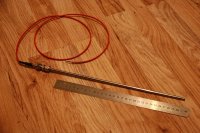Ok, so I have done a searches on the internet for rtd circuits. I plan to interface to an arduino. I have had various successes in my search but nothing that I did not have to modify.
So, let's compile a thread with rtd circuits that have been tested and used for brewing.
Sent from my iPhone using Home Brew
So, let's compile a thread with rtd circuits that have been tested and used for brewing.
Sent from my iPhone using Home Brew




